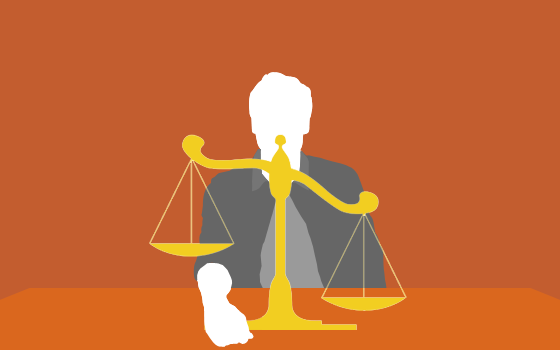“George is a 42-year-old Product Manager who works from a cubicle in a 300-person medical devices company in New England. He and all his colleagues still use Blackberry devices to communicate. His office computer is five years old and still runs Windows XP. But at home, George uses an iPad and an iPhone.
George is a sad man. But little did he know, his life was about to change…”
Any idea where this text comes from?
You guessed it: It’s a sample website persona I came across on an agency’s blog.
Ok, Ok, so I added the last bit.
Otherwise, this persona remains just as the agency posted it. Given the source, I’d expect it to be creative, but this — even without the “little did he know” — starts to veer off into fictional character study territory, doesn’t it? Now that we’ve read it, we know a few things about George, sure, but which of them is really going to help us when we sit down to create content for our website?
We don’t especially need to know how old George is, or what device is in his pocket. We don’t need to know that George’s IT department has imprisoned him in the past. We don’t even need to know that his name is George.
We need to know where George is in the buying cycle. That’s all that matters. We’re not creating content to entertain him. We’re creating content to help him make the right buying decision.
Now, I’m not recanting anything I’ve previously said or written about personas. Detailed personas are valuable, provided they’re properly researched and used, and especially when a website needs to serve a variety of very different populations. Unfortunately, I tend to see detailed personas (just like “George”) that are invented — rarely researched and never tested. That’s not good enough. The whole point behind the persona development process is to test and verify what we think we know about our market. If you can’t stick to the full persona development process (I get it — it takes more time than we usually have), don’t make them up. You’re better off generalizing your personas in terms of one specific behavior, because no matter how detailed a persona may be, it cannot do its job without being framed in terms of buying. The good news is that the four stages of the buying cycle represent four personas that everyone doing marketing on the web has in common.

Stage 1: The Unaware
Think back to the last significant purchase you made. What influenced your buying decision? Rather than just one thing, it was probably a series of things — including, but perhaps not in this specific order, a sense of need, advertising, research, reviews, demos, trials, etc. All of those things represent key steps in a pretty predictable buying cycle. But many things we buy are things we didn’t know we needed until someone told us about them. That’s push marketing. It’s interruptive.
Website content is not going to push the unaware forward in the buying cycle; in order to find your website, they must be aware. So the good news is that this stage-1 persona is one you can ignore — at least as far as your website content strategy is concerned. Hey, it’s one less thing to worry about.

Stage 2: The Researcher
It’s very late 2012, so I know I don’t need to make another pitch for content marketing. But if you are at all skeptical of the role of content in marketing, consider this: for products and services worth $10k or more, 70% of buyers review 4 or more pieces of unique content before purchasing. Speaks for itself, eh?
Most of those 4+ pieces of unique content are going to suit someone in stage 2: a researcher. A researcher is aware of her need and is considering her options. Researchers need content that will answer the questions they have at this early stage, which tend to represent the tips of many conceptual icebergs relevant to a potential vendor’s expertise. For a firm like mine, a researcher’s questions could be about a wide variety of topics — design, development, usability, SEO, content marketing, measurement, marketing automation, etc. — and, naturally, you’ll see all of them covered right here on our website in blog posts, webinars, and newsletter articles like this one.
Content for researchers is educational. It’s also findable.
Though researchers may be aware of their need, they probably are not aware that you are out there, ready to help them. But all the content in the world won’t draw researchers unless you properly frame it for their search. That’s where SEO comes in. And no, there’s no magic to it. Just a little thought, some metadata, and probably a healthy dose of trial and error.
Research takes time and attention. Those four pieces of unique content might be viewed over the course of months, and not all from the same source. So while you have a researcher’s precious attention, you need to ensure that you’re helping them make the best use of it — now, and later. For now, make sure you prominently offer related content so that they know your expertise runs much deeper than just one article. For later, make sure that you offer them a quick and simple way to stay informed by you via email subscriptions to your content.

Stage 3: The Evaluator
Once a researcher has the information she needs, she can form criteria on which to judge her options. She is now an evaluator.
But evaluators need help in establishing that criteria, as well as in preparing to make a case for hiring you. So content for evaluators must clarify practical considerations — such as pricing, timing, and process — reinforce core concepts, validate opinions, and answer objections. This kind of content can take many forms.
The practical issues of pricing, timing and process — to the extent that they are predictable and consistent in your work — should be clearly articulated on dedicated pages and prioritized in your website’s information architecture. Content that reinforces and validates must be data-rich and easily portable, and can take the form of research reports, surveys, and polls. Lastly, content that answers objections should preempt them by outlining what the evaluation criteria should be for your product or services. This could be done in case studies that follow a problem → solution → outcome format, as well as diagnostics and planning checklists.
Properly equipping an evaluator is a form of consultation. Keep in mind that they are more likely to agree to be your client if you start treating them like one before they’ve decided to hire you.
Evaluator content should come with calls to action that aid you in properly vetting the sales potential of a visitor. For example, research papers are valuable enough to simply require an exchange of information prior to access. Gateway forms for research content should be brief, but they should ask for key pieces of information in addition to name and email address — such as title and company name — that can be collected and organized by your CRM and marketing automation tools. Evaluator activity is of especially high interest and should be scored on the basis of content exposure so that salespeople can focus their time and attention on leads that are poised to make a decision.
(As your audience and content marketing system grow, you will have little choice but to rely upon automated tools to collect, score, and nurture leads. These types of tools and systems will be the focus of much content to come from us, by the way.)

Stage 4: The Purchaser
A purchaser, having passed through the previous stages, is going to be well-informed. The key difference, though, is that a purchaser has a budget and the authority to spend it. At this point, your content has done its job, and it’s time for a human connection.
Your website can facilitate the right connection by making it easy for a purchaser to make herself known to you. A generic contact form could certainly make this possible, provided the purchaser makes her position clear, but a form that is designed specifically for a purchaser will always be more effective. Starting with the call to action itself, the language should speak directly to this stage (e.g. Let’s Talk, Work With Us, Start Your Project) and should certainly gather a bit more information about the purchaser and her company, just as an evaluator CTA would. The idea here is to continue to smoothly guide this person, though this time from an online marketing process to a person-to-person sales process.
On that note, I think Seth Godin summed up this process, in principle, quite well in a short post from earlier this month. He wrote:
“The goal of a marketing interaction isn’t to close the sale, any more than the goal of a first date is to get married. No, the opportunity is to move forward, to earn attention and trust and curiosity and conversation.
Simple, clear and actionable.”
Overcomplicated personas are neither a wide net, nor a precision tool. Rather than help you speak to the right people in the right ways, they are more likely to obscure the message and make results elusive. By focusing on the buying cycle, your personas will more closely match the people who call. And if you create content that meets their needs at each stage, they will call.
